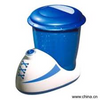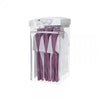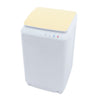What are Aerobic Septic Systems?
Aerobic septic systems are used in situations where standard septic systems are not a viable option. In many cases, aerobic systems and septic protectors are used to replace failing septic systems. Aerobic systems are similar to septic systems in that they both use natural processes to treat wastewater. But unlike septic (anaerobic) treatment, the aerobic treatment process requires oxygen. There are two types of bacteria, anaerobic and aerobic. Aerobic bacteria work much faster than anaerobic bacteria, which means they process septic tank waste more quickly. Aerobic treatment units use a mechanism to inject and circulate air inside the treatment tank, which accelerates or speeds up the treatment process. This mechanism requires electricity to operate. For this reason, aerobic systems cost more to operate and need more routine maintenance than most septic systems. However, when properly operated and maintained, aerobic systems can provide a high quality wastewater treatment alternative to septic systems. They can also be used in some cases by owners of wooded lots, who don’t want to clear enough land to install a traditional septic tank and drainfield.
Installation
Aerobic units can be installed above or below ground. They may require electrical connections, additional excavation, installation of pretreatment or final treatment components, and access for maintenance.
Benefits/Costs
Aerobic systems can cost two to three times that of a standard septic tank, although this varies based on design, location, size, installation and aerobic septic system maintenance requirements. The aeration mechanism requires electricity and routine maintenance.
Savings can be realized if the drain field can be reduced or if its life can be prolonged. There is the potential for space-saving and less groundwater pollution than ordinary septic systems. Aerobic systems may allow a site to be developed that could not otherwise support a conventional septic system.
All septic systems need a washing machine filter (to protect the system from lint, one of the leading causes of septic system failure). However, they are even more important to use with aerobic septic systems, because they usually use some types of media or filters in them which can easily get clogged with lint. Many manufacturers will claim their systems don’t need a lint filter, because they are afraid their systems will appear inferior next to their competitor’s system. In fact the head of one of the best manufacturers has contacted us and confirmed that lint was a major problem in their systems.
Limitations
In addition to regulatory restrictions, aerobic systems have both a higher first cost and other maintenance demands than septic systems. Treatment diminishes if these systems are neglected or turned off, if harmful chemicals are poured down the drain, or if the ambient temperature is too low. The aerobic process reduces the effluent’s ammonia content, but may increase its nitrate content. However, re-circulation back to an anaerobic environment (septic tank) can reduce total nitrogen output.
Code/Regulatory
Aerobic systems are not accepted in all areas; check with the local health department. Some jurisdictions do not allow for a reduction in drain field area for aerobic systems, but some jurisdictions do allow for a reduction or elimination of a reserve area, with pretreatment. In other areas, aerobic systems are being allowed on an experimental or trial basis, or to repair failed systems. Approval usually comes from the state or local health department. NSF/ANSI 40 – 2000 Standard for Residential Wastewater Treatment Systems details requirements for approval of the system. Aerobic units are required to include two years of manufacturer maintenance service and renewal options, and to have alarms to alert the homeowner of malfunctions.
Availability
A variety of aerobic treatment systems are available from different manufacturers. The demand for these systems has increased in certain areas as the need for improved wastewater treatment increases.
Aerobic treatment systems use a mechanism to inject air into a tank, encouraging decomposition that produces a higher quality effluent. In some cases, the size of the drain field can be reduced to allow development of a site that otherwise could not support a conventional septic system.
The main application for an aerobic treatment system is to retrofit a failed septic system. Other applications include poor soil, high groundwater/bedrock, little available land for a drain field, high proportion of organic matter or the need for high-quality effluent for environmentally sensitive sites.
There are a variety of designs for aerobic systems, but they do have some common features. These include pretreatment to reduce the amount of clogging solids, an aeration process, settling for suspended growth systems, and final treatment/disinfection. The most common kind of aerobic system is “suspended growth.” Air is forced into an aeration compartment in which sewage-digesting bacteria are freely suspended in the liquid/air mixture. The other method is “attached growth,” in which a surface is provided for bacteria to attach themselves. The surface is alternately exposed to the liquid and air. Because of the possibility of disruption under a sudden heavy waste load, some systems do not allow continuous flow, but restrict it through various devices such as pretreatment tanks, surge chambers, and baffles.
As you may know from researching this topic, failing septic systems are a major financial and environmental problem in this country. Expensive septic repairs can often run from $5,000 to $20,000 or more and a large number of systems are failing throughout the country. For news stories related to failing septic systems and tightening regulations you can go to: http://www.laundry-alternative.com/failing-septic-systems/regulations/
You also can’t sell your home if it has a failing system. For more information on how to properly maintain your septic system, go to: http://www.laundry-alternative.com/septic-system-maintenance/













